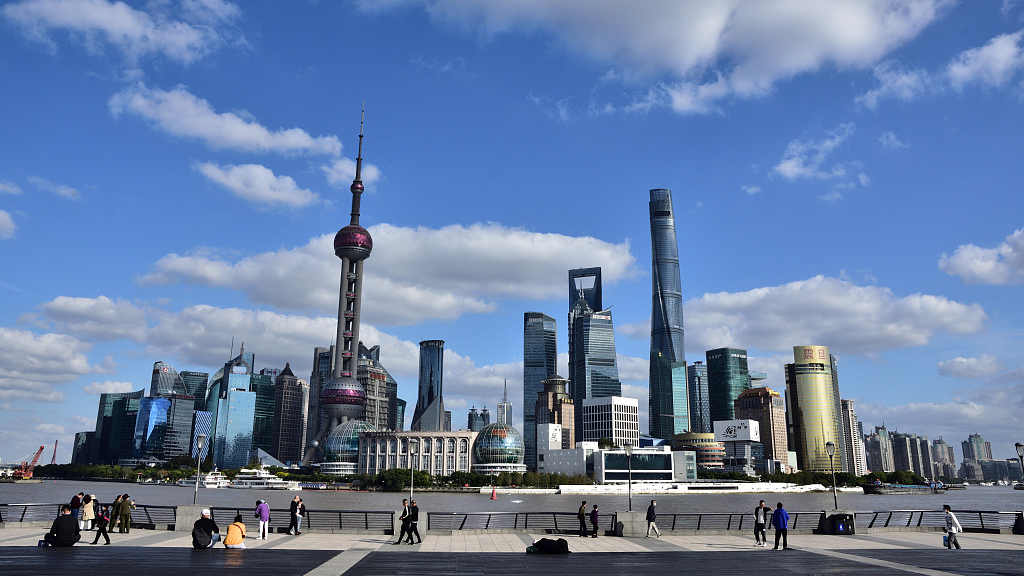The World Bank on Tuesday raised its 2023 global growth outlook as it said China and other major economies have proven more resilient than previously forecast, but warned that higher interest rates and tighter credit will take a bigger toll on next year's performance.
The global economy is set to climb 2.1 percent this year, up 0.4 percentage point from a forecast in early January, but well below the 2022 growth rate of 3.1 percent, according to the World Bank's latest Global Economic Prospects report.
Meanwhile, the bank significantly lifted China's growth forecast to 5.6 percent in 2023, up 0.5 percentage point from April's forecast.
The institution expects growth to diverge between different regions of the emerging and advanced economies this year and the next.

A view of the riverfront area, the Bund, in Shanghai, China. (Photo: CFP)
Growth in East Asia and the Pacific, as well as in Europe and Central Asia, is expected to accelerate this year as China's economic restart spurs economic recovery and as growth prospects improve in several major economies, it said.
In contrast, growth is expected to slow in all other regions, especially Latin America, the Caribbean, the Middle East and North Africa.
However, the development lender warned that the global economy will grow significantly slower this year compared with the last, with "modest" growth expected in 2024, with monetary policy continuing to tighten to control high inflation, the report said.
Tight global financial conditions and subdued external demand are expected to weigh on growth in emerging markets and developing economies.
Among major economies, the U.S. economy is expected to grow 1.1 percent in 2023 and continue to slow to 0.8 percent in 2024, due to the impact of the sharp rise in interest rates over the past year and a half.
The World Bank said due to the delayed effect of monetary policy tightening and rising energy prices, the euro area's economic growth is expected to slow to 0.4 percent this year, from 3.5 percent in 2022, and the economic growth in 2024 was revised downwards by 0.3 percentage point to 1.3 percent.
China's economy is expected to grow 4.6 percent next year, 0.4 percentage point lower than the previous forecast in January, it said.
Japan's growth outlook this year was revised down by 0.2 percentage point to 0.8 percent, with the GDP forecast for next year unchanged at 0.7 percent.
The report said that the global economy remains in a "precarious state" amid the continued negative impact of the COVID-19 pandemic, the conflict between Russia and Ukraine, and the drastic tightening of monetary policy to control inflation.
Global growth could be weaker than expected if the banking crisis widens or if more persistent inflationary pressures cause monetary policy to tighten more than expected. The recent banking crisis calls for a renewed focus on global financial regulatory reform, said the World Bank.
World Bank Chief Economist Indermit Gill put a gloomy spin on the new forecasts, saying: "Outside of East and South Asia, it is a long way from the dynamism needed to eliminate poverty, counter climate change, and replenish human capital."
"In 2023, trade will grow at less than a third of its pace in the years before the pandemic. In emerging markets and developing economies, debt pressures are growing due to higher interest rates.
"Fiscal weaknesses have already tipped many low-income countries into debt distress. Meanwhile, the financing needs to achieve the sustainable development goals are far greater than even the most optimistic projections of private investment," he said.
The report points out that the rapid rise in U.S. interest rates poses a major challenge to emerging markets and advanced economies, and the possibility of a financial crisis is rising.
As of the end of February, 14 of the 28 low-income countries were in debt distress or at high risk of debt distress.


